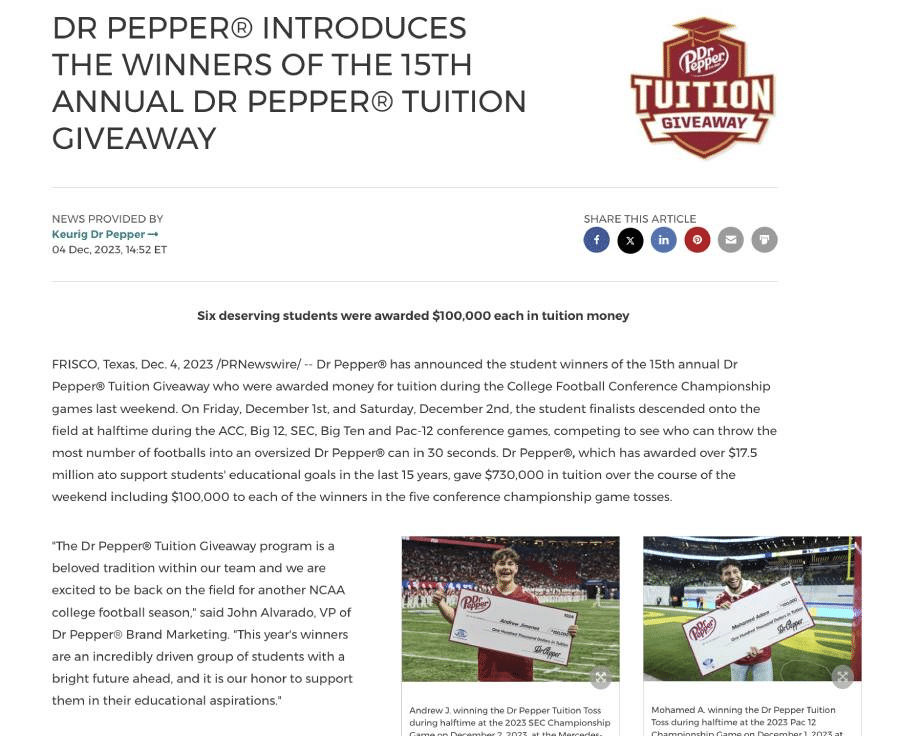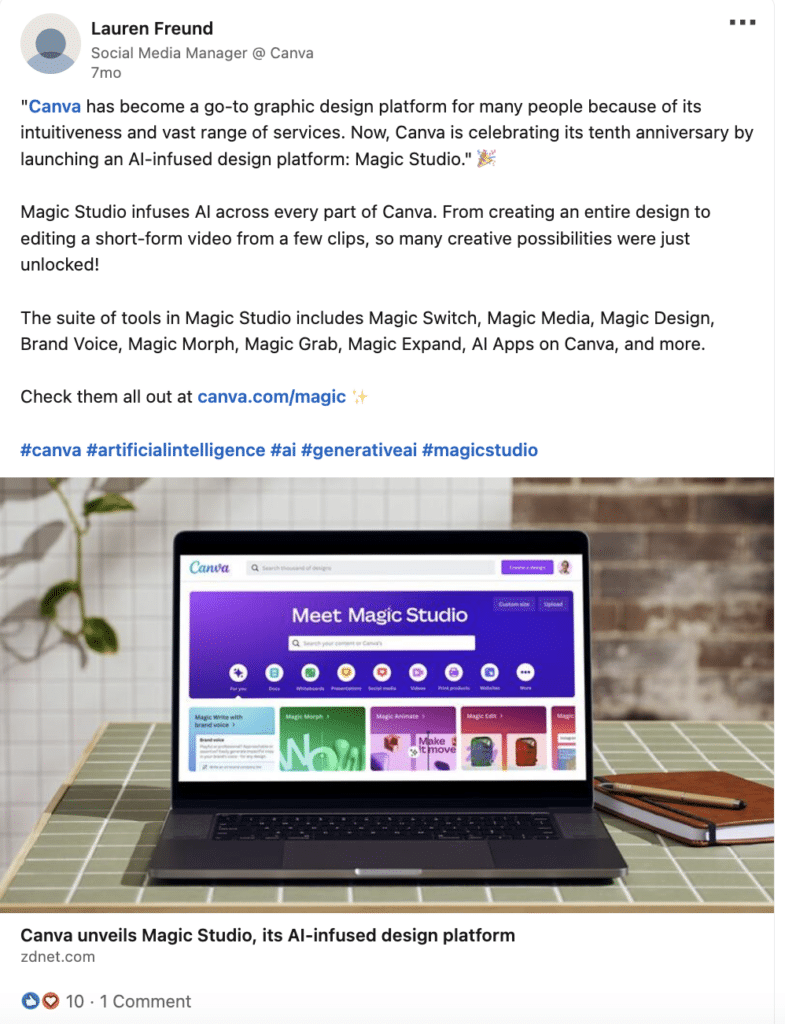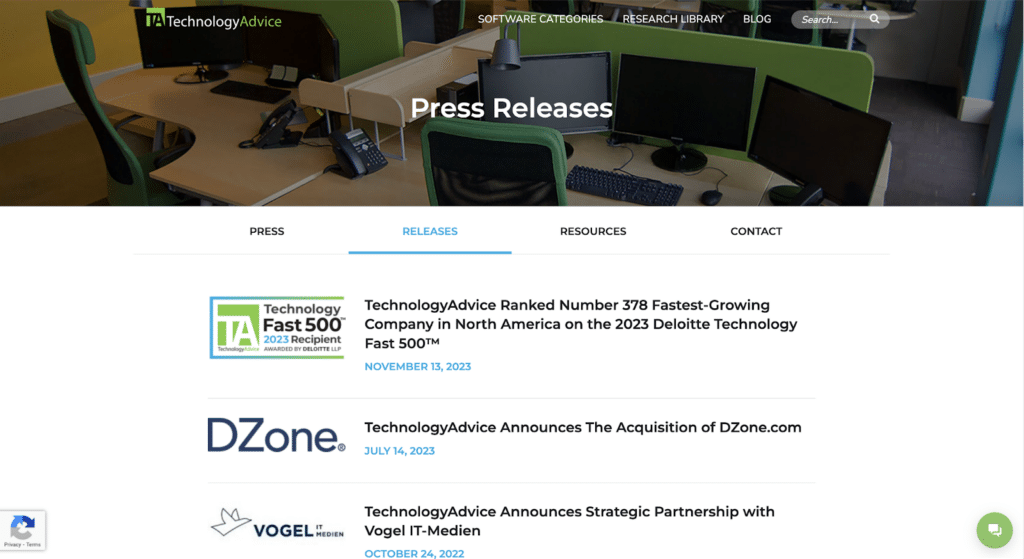If you want to learn how to distribute a press release, the best answer is to write a compelling story about a newsworthy topic relevant to your target audience. However, there are ways you can optimize your press release further, like optimizing it before distribution, sending it to the right people, and boosting its exposure after it is published. Below are 16 press release distribution tips to maximize your press release’s impact.
Quick recap: Press releases are documents sent to the press announcing a newsworthy story or event from your business, like a grand opening or a new acquisition, with the aim of earning media coverage to grow your brand presence.
Press release distribution is when you send your document out to journalists and media outlets, usually through a press release distribution service, so they can read your story. Find more about what press releases are and how they work.
Optimize Your Press Release Before Distribution
Before distributing a press release, there are a few important things to note to ensure your document is ready for the press. A press release is an official document, and to maximize its chances of getting picked up by journalists, it needs to make a good impression. A well-formatted and optimized press release increases your credibility—and your likelihood of earning media coverage.
Here are some tips to keep in mind on how to optimize your press release before sending it to the press:
1. Follow Correct Press Release Formatting
For your press release to be taken seriously by journalists, you need to follow proper press release formatting. Press releases follow a strict industry format—failure to stick to it can cost you your chance of landing press coverage. The correct press release format includes a header and headline, a dateline and lead paragraph, supporting paragraphs, and a boilerplate.

An example of proper press release formatting
To ensure your press release has all the right formatting, you can also partner with an all-in-one press release writing service like EIN Presswire or Newswire. These services have public relations (PR) professionals who can write and format your announcement according to industry standards, and many also have distribution services.
2. Include Images, Graphics, or Videos
Multimedia content like images, infographics, and videos makes your story more engaging to audiences and easier to understand. Studies even show that press releases with images are up to seven times more likely to be covered by the media than those without.
Adding media elements can help you tell a more well-rounded story, especially as journalists prefer stories that already have supplemental elements. This, in turn, increases your odds of getting picked up by media outlets.

Here’s a good example of a press release with relevant images that support the story.
Be careful to include only images or videos supporting your stories, such as your company’s logo or photos of your product or space, and stay within copyright laws. Adding unrelated images (or even too many related images) will only divert attention away from your story.
3. Make Your Document Easy to Scan
One of the most important (yet often overlooked) press release distribution tips is to make your story easy to scan. Picture this: you’re a journalist with a deadline, juggling a dozen stories a day. You open up a press release from a business you haven’t heard of, only to find it lengthy and cumbersome to read, making it harder to write your story.
You don’t want to be the brand with a difficult-to-understand press release. Before sending your document, make sure it’s easy to scan. Have it checked by an editor or a trusted friend to ensure your story is comprehensive. A clear and understandable story is more likely to get covered.
4. Craft an Interesting Press Release Email Pitch
Before emailing out your press release to journalists, you’ll first need to craft a pitch. This is a short message telling journalists about your business, your story, and why they should cover it, which goes in the body of your email content. A good pitch is essential, as it acts as your first point of contact with journalists, and will determine whether or not they open and read your press release.
To craft a compelling pitch, research the publication’s audience and characteristics (more on this below). Then, introduce yourself and your business, and concisely explain your story and why it’s valuable and interesting to that audience. This is important, as journalists decide a story’s newsworthiness based on the value it gives their audience.
Close the email with your contact information and an invitation to connect, and thank them for their time. Find out more about the process in our step-by-step guide on how to send a press release.
5. Send It at the Right Time
One of the most crucial factors in determining how to distribute a press release effectively is timing. Like anything else in marketing, sending your press release at the right time maximizes its impact and increases your chances of getting picked up. According to a 2023 study by PR firm Prowly covering over 55,000 press releases, here are the best days and times to send press releases:
- Thursdays are the best days to send press releases, as they have an email open rate of 26.76%.
- The best time to send press releases is between 10 a.m. and 2 p.m., which is when most editors open their emails.
- The worst days to send press releases (apart from weekends) are on Thursdays and Fridays as open rates drop by over 10%.
When you send your press release, give journalists enough time to write their stories on it and to reach out to you as needed. For radio and television stations, send your press release a week before you want your story covered. For newspapers, pitch three weeks in advance, and for magazines, send three to six months ahead if you can.
For more guidance on what to do to set your press release up for success, read our list of press release best practices.
Distribute Your Press Release to the Right People
Distribute press releases via reputable platforms like EIN Presswire for maximum reach. Target relevant media outlets and audiences, use compelling headlines, and optimize for SEO. Time releases strategically, follow up with journalists, and track performance to refine future distribution strategies. |
Limited-time offer: Buy 5 press releases & get 2 more free |
Another crucial element of effective press release distribution is getting it to the right people. There are two ways you can send your press release: via a distribution service, which is most common, or manually via email. Whichever way you choose, using these press release distribution tips helps ensure that your press release reaches the right people.
6. Research Journalists’ Target Audience
Having a large contact list may seem tempting, but even more important is to send your press release to journalists whose audiences would be interested in your story. For example, you don’t want to send your restaurant’s grand opening press release to sports media outlets.
Before hitting send on your email pitch, take time to research the audiences your media contacts write for. Aligning your story with your media contacts’ audiences makes it more likely to get covered.
7. Choose the Right Press Release Distribution Service
Choosing the right press release distribution service also plays a crucial role in determining how to distribute a press release effectively. While you can send your press releases yourself, it’s often time-consuming and difficult to track. This is why we recommend using a distribution service instead. These services have experienced PR professionals with hundreds of media contacts who can distribute your press release at affordable rates.
Here are some of the best press release distribution services:
|
|
|
|
Starts at $99.95 | Starts at $399 | Starts at $349 | Starts at $159 |
Which platform is best for you comes down to factors like your budget, target audience, whether you need additional services like press release editing or writing, and what type of press release you’re sending. Find out more about each of these services (and more options) in our guide to the best press release distribution services for small businesses.
8. Build Win-Win Relationships With Journalists
A good portion of effective press release distribution is building media connections. Just like you, journalists have goals they need to meet regularly. They can help you meet your goals by covering your news, and chances are you have a lot to offer them as well, such as sources for stories, quotes, and others, which is why having good relationships is mutually beneficial.
Here are some simple ways to build win-win relationships with journalists:
- Engage on social media: Follow journalists on social media who cover stories like yours and boost their engagement by occasionally commenting, sharing, and liking their posts, especially if you have meaningful insight to share.
- Offer them valuable sources: As you follow journalists’ stories, pay attention to any subjects you might be able to provide valuable sources on. With the source’s permission, offer to connect them.
- Personalize your pitch: While the general body of your pitch may be the same across all your emails, personalize your email’s greeting and tailor the angle to the audience of each journalist.
- Express appreciation: Send a thank you email or note anytime a journalist picks up your story. Going forward, send an advance media release, giving them first dibs on covering future stories.
Our article detailing how to get a story on the news offers several more tips for national and local press release distribution, including building a contact list and engaging with journalists.
9. Keep Your Media Contact List Updated
Before emailing your press release to media contacts, it’s worth checking the health of your list using email finding and verification tools. These tools check if your list contains out-of-date or inaccurate information, such as email addresses that no longer exist, and help you find the correct email addresses.
Here are some other digital tools you can use to locate journalists’ email addresses:
- Email finders: There are cheap and free email finder tools like Hunter.io that locate email addresses from business databases on the internet. However, only use these to find or verify specific email addresses—not for building an entire list.
- LinkedIn: Navigate to your media contact’s LinkedIn profile, check their contact information, and send them a message if necessary. However, also do this sparingly as it can make you appear unprofessional and risk being reported for spam.
- Prowly: Prowly is a PR and media relations software that lets you find and connect with over a million media professionals worldwide. However, there are no free plans, so you’ll need to shell out some money.
Another option is to contact publications by phone and ask for the journalist’s contact information. If they have a social media page, you can also drop them a message. Any point of contact is always worth trying—just be sure to communicate professionally and politely.
10. Email Your Release to Journalists, Not Newsrooms
Distributing press releases to a generic email address like info@newsroom.com (or through online web forms) doesn’t guarantee journalists will see and read your press release. Instead, send your press release directly to journalists’ email addresses to ensure they see your message.
For example, if you were launching a new restaurant in your area, connect with reporters and bloggers who cover food topics instead of sending it to a generic publication email address or web form.
11. Consider Sending to Influencers & Bloggers
Anyone in PR today will tell you that not all buzz is generated by traditional media outlets. You also have bloggers and influencers who have wide audiences. In many cases, they’re also more effective at reaching your specific target audience (and unlike journalists, they usually don’t have as many pitches flooding their inboxes every day).
When reaching out to bloggers, send a short message summarizing your news. Invite them to reach out for more information and ask if you can send them a copy of your release. If your press release isn’t yet live, note that the story hasn’t gone live yet to entice them to offer a “breaking story” to their followers.
Alternatively, there are also a number of distribution services with bloggers and influencers in their contact lists. While these aren’t free, they’re often more effective as these bloggers specifically opt-in to receive press releases from small businesses.
Boost Press Release Exposure After Distribution
Learning how to write and distribute a press release the right way doesn’t end once you send your email. You want to garner as much exposure as you can for your story and brand. Fortunately, there are many post-press release distribution tips you can follow to help you along. Below are some tips to ensure your press release’s long-term, post-distribution success.
12. Follow Up With Journalists After Sending Your Press Release
Once you’ve submitted your press release, give the journalist time to read it through. Then, send a follow-up email within three days. For press releases that need to be published immediately or within days, it’s also acceptable to follow up even sooner.
Your goal is to make the journalist’s job easier every step of the way, so when you’re following up, be respectful and position your email as a courtesy. Remind them of who you are, your press release, the most important points of your story, and that you are reaching out to see if they have any additional questions.
13. Share Your Press Release on Social Media
After your press release is published, share it on social media to reach more people and boost your brand’s credibility among your followers. Depending on the social media platform, add relevant photos or a video, a short, attention-grabbing caption, relevant hashtags, and a link to the published release. Also, tag the publication and the journalist who covered it in your post for even more reach.

Here’s an example of how you can share your published press release on social media. (Source: LinkedIn)
14. Gain More Traction With Paid Social Media
Once your press release is published and posted on social media, you can also use boosted posts or ads to promote it even further. This is also a good option to reach specific audiences as social media ads also offer advanced targeting tools.
For example, X’s (formerly Twitter) Promoted Tweets can target specific news networks and their audiences. Similarly, Facebook Ads can target audiences by interests and demographics.
15. Track Your Press Release’s Analytics
After distributing your press release, you’ll also need to track its performance. Press release analytics provide valuable insights that can fine-tune your future PR efforts. Some metrics you can track are the number of outlets your press release was published in, the audience demographics of those outlets, the type of media that garnered the most engagement, and the most effective keywords, among others.
To do this, look for a distribution service that gives you comprehensive performance analytics. Particularly, look for in-depth data on engagement (click-through rates, views, and the like), media pick-ups, and audience data like locations and interests.
16. Host Published Press Releases on Your Website
Once your press release is published and shared, one final way to keep your exposure going is by hosting it on your website. Having news stories about your brand on your site for all your visitors to see gives you an instant credibility boost. Plus, having many authoritative mentions of your brand on your website is helpful for your SEO.
You can host your published press releases on a “Press” section or page on your website. It’s also a good idea to place it near your press kit in case other journalists want to learn more about your brand or reach out to you further.

Here’s an example of press releases hosted on a “Press” page on the TechnologyAdvice website.
Frequently Asked Questions (FAQs)
The best way to distribute a press release is via a press release distribution service like EIN Presswire or eReleases. These services have PR professionals who can distribute your press releases to relevant media outlets and provide you with precise insights about their performance, all at small business-friendly pricing. It’s the most efficient and effective way to get your press release in front of journalists and increase your chances of getting media coverage.
You can distribute a press release at no cost using a free distribution service like PRLog or OpenPR. However, these services often have limitations, like word counts or the number of press releases you can send each month. Alternatively, you can send your press release manually by building a media contact list and emailing your press release. However, this way is often less effective at getting journalists’ attention.
Most press releases are distributed to journalists via email, usually via a press release distributor like EIN Presswire or Newswire. These services take your press release story and then email it to relevant journalists and media outlets. After your press release is published, you can also distribute it further by sharing it on social media or your website.
Bottom Line
Knowing how to distribute a press release the right way can make the difference between getting published in the news or being sent to the spam folder. Press releases are one of the most established practices in marketing and public relations. Knowing how to use them effectively increases not only your chances of media coverage, but also your credibility with journalists. The press release distribution tips above can get you started on the right track.
If you need extra help with your press release distribution, our best tip is to partner with EIN Presswire. Their PR experts can handle all the press release distribution to get your story in front of thousands of journalists, and they’re experienced with working with small businesses.